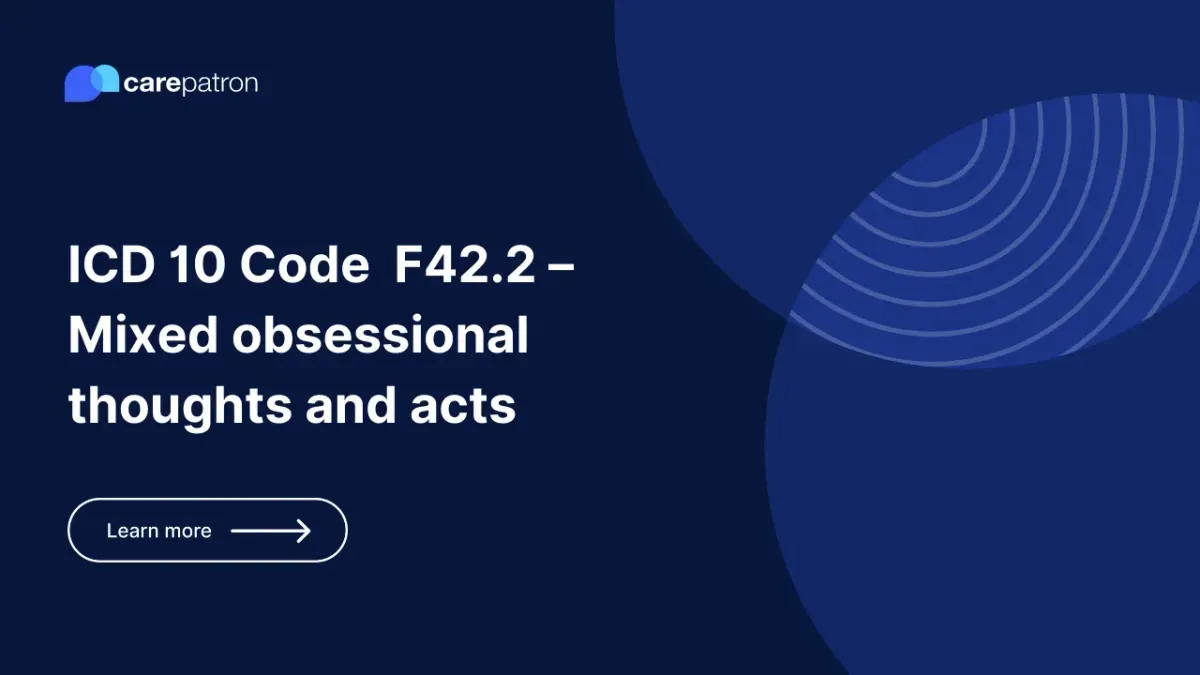
F42.2 – Mixed obsessional thoughts and acts
ICD-10-CM code F42.2 represents mixed obsessional thoughts and acts. This guide details its clinical relevance, billability, FAQs, and associated codes.
Use Code
Commonly asked questions
F42.2 is the ICD-10-CM code for "mixed obsessional thoughts and acts." It involves both persistent intrusive thoughts and compulsive behaviors, such as repetitive checking or rituals.
Obsessive thinking can be your mind’s way of trying to control uncertainty or manage anxiety. These thoughts often feel repetitive and intrusive, and they are commonly associated with OCD, anxiety disorders, or periods of severe stress.
Intrusive thoughts are most commonly linked to obsessive-compulsive disorder (OCD). They may also occur in conditions like generalized anxiety disorder (GAD), post-traumatic stress disorder (PTSD), and depression.
EHR and practice management software
Get started for free
*No credit card required
Free
$0/usd
Unlimited clients
Telehealth
1GB of storage
Client portal text
Automated billing and online payments
